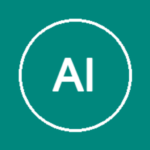Understanding Tax Cuts: A Key Economic Tool
Tax cuts are a powerful economic tool that can significantly impact an economy, but how do they work exactly? Imagine you have a jar full of coins representing government revenue. When the government decides to cut taxes, it’s like taking some coins out and putting them back into people’s pockets. This simple act can set off a chain reaction, much like dropping a stone in water creates ripples.
Types of Tax Cuts: A Closer Look
Tax cuts come in various forms, each with its own unique effects on the economy. Let’s explore some of these types:
- Supply-side tax cut: This type aims to boost capital formation by lowering the price level of a good. It’s like giving businesses more money to invest and expand their operations, much like adding fuel to a fire.
- Corporate income tax cut: This can lead to sustained effects on research and development (R&D), productivity, and output. It’s akin to providing companies with the resources they need to innovate and grow, similar to giving a plant water and sunlight for it to flourish.
- Personal income tax cut: While this type can provide a short-term boost to GDP and productivity, its long-term effects are less clear. It’s like giving individuals more money in their pockets, but the exact impact on spending and saving is harder to predict.
The VAT Dilemma: A Consumption Tax Perspective
Value-added tax (VAT) is another form of consumption tax that can significantly affect a country’s economy. Lowering VAT rates might stimulate short-term consumer spending and encourage business investment, but it also reduces immediate government revenue. This reduction in revenue could impact public services and infrastructure, creating a delicate balance.
Imagine VAT as a toll on the road to economic growth. While lowering the toll can make travel more attractive, it may also reduce the funds available for maintaining the roads. Managing this trade-off is crucial for long-term stability.
The IMF’s Perspective: Three Key Factors
A 2017 IMF working paper highlighted three major factors regarding tax cuts:
- Tax cuts boost the economy in the short term but never offset loss of revenue. This is like giving everyone a cookie, which makes them happier temporarily, but doesn’t change the overall amount of cookies available.
- Tax cuts may help low-income groups as wealthier individuals tend to spend more on services provided by low-income individuals. It’s like redistributing wealth through tax cuts, ensuring that those who need it most benefit first.
- The impact of tax cuts can vary depending on the situation of the economy and the method of compensation for lost revenue, including spending cuts, government borrowing, or improved productivity. This is akin to choosing between different strategies to keep a ship afloat – some methods might work better in certain conditions than others.
Historical Examples: Tax Cuts Across the Globe
The United States has seen several significant tax cuts over the years, each with its own unique impact. For instance:
- Tax Cuts and Jobs Act 2017: This act lowered corporate tax to 20%, aiming to stimulate business investment and growth.
- American Recovery and Reinvestment Act 2008: Included a $400 tax credit for individuals, designed to boost consumer spending during the Great Recession.
Other presidents have also implemented significant tax cuts. For example, President Ronald Reagan’s policies included the Economic Recovery Tax Act 1981 and the Tax Reform Act 1986, which aimed to stimulate economic growth but faced criticism for not fully offsetting revenue losses from previous tax cuts.
Each of these examples highlights how tax cuts can be a double-edged sword. While they may boost short-term economic activity, long-term effects depend on various factors and the overall economic context.
The Tradeoff Between Growth and Income Inequality
Tax cuts often come with tradeoffs. For instance, upper-class tax cuts can increase lower-class demand but also exacerbate income inequality. Lower-class tax credits have less impact on income gaps compared to upper-class tax cuts. Middle-class tax cuts reduce income inequality but provide lower dividends from growth.
Conclusion: Balancing the Scales
Tax cuts are a complex and multifaceted tool that can significantly influence an economy. They can boost short-term economic activity, stimulate investment, and increase disposable income for individuals. However, they also come with potential drawbacks such as increased national deficits, reduced government revenue, and the risk of exacerbating income inequality.
As policymakers navigate this landscape, it’s crucial to strike a balance that promotes long-term growth while ensuring fairness and stability. By carefully considering the various types of tax cuts and their impacts, governments can make informed decisions that benefit all segments of society.

You want to know more about Tax cut?
This page is based on the article Tax cut published in Wikipedia (retrieved on February 26, 2025) and was automatically summarized using artificial intelligence.






